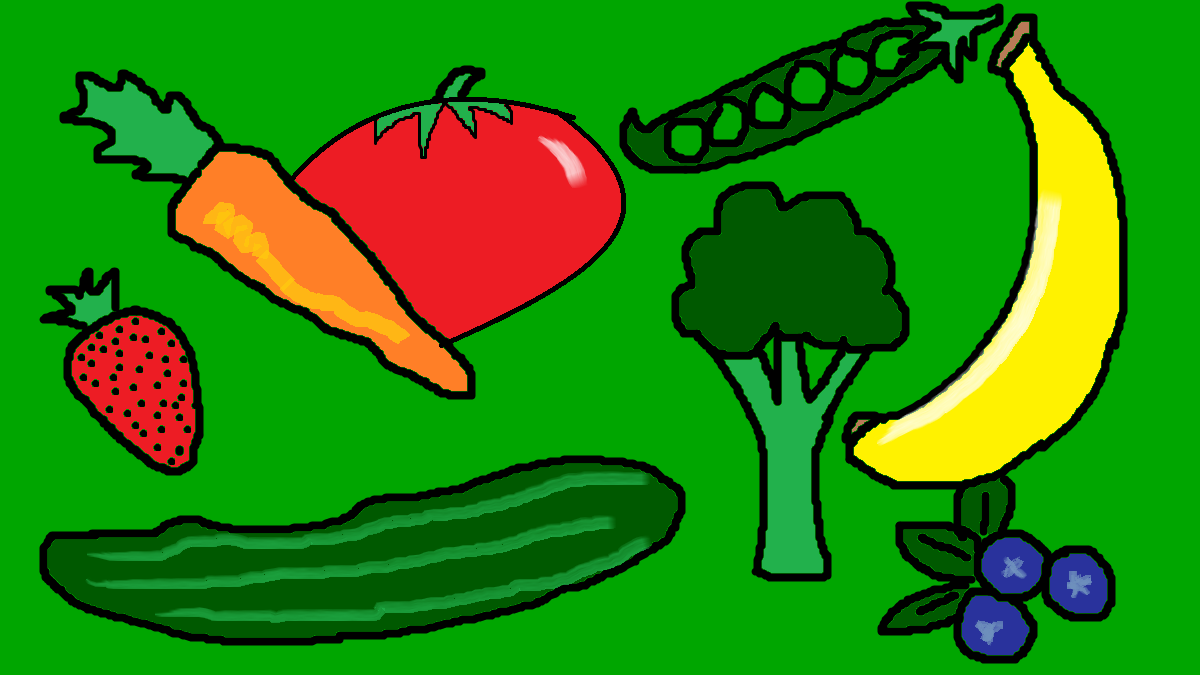New semester, time to eat healthier: Adding fruits and veggies to your daily diet
 Sam Podgurny
Sam PodgurnyEveryone knows fruits and vegetables are good for you, but why do they really matter in your diet? In short, these foods contain many antioxidants, phytochemicals, vitamins, minerals, and fibre that can help reduce your risk of chronic disease and some cancers, lengthen your life, and make you feel better and more energized. On top of that, they are generally low calorie and can help you avoid the freshman (or any year) 15. Canada’s Food Guide recommends the average university student eat seven to eight servings (for females) and eight to 10 servings (for males) per day (a serving is 1/2 cup fruit/vegetables, or one cup raw leafy greens), and the Eat Well Plate recommends making half your plate vegetables/fruit at every meal.
If you’re falling extremely short of those recommendations, here are seven ways you can incorporate more fruits and vegetables into your daily diet.
1. Green Smoothies
A green smoothie is a great way to take in multiple servings of fruits and vegetables at one time. It’s best if you make it yourself so you can control exactly what goes into it, and a good place to start is with equal parts fruit to greens, to ensure a good balance.
2. Read-to-eat veggies/ fruits
Buy baby carrots, sugar snap peas, or baby cucumber for a no-prep needed snack. Or chop a bunch of cucumber, bell pepper, etc. over the weekend so that you can grab and go during the week. The same thing goes for prepping fruit; alternatively just stock up on fruits like apples, oranges, and bananas.
3. Pack your own lunch
Pack fruits/vegetables in your lunch and bring them to school or work! Some good options are crunchy raw veggies, paired with a dip such as hummus or peanut butter, or a salad topped with more chopped veggies or fruit. It’s much easier to eat veggies when your options are limited versus when you’re faced with a pantry or vending machine full of other snack choices. Alternatively, snack on a fruit paired with a source of protein, such as fruit mixed into greek yogurt, or alongside a small handful of nuts (or 1/4 cup, about the size of a shot glass), to keep you satisfied.
4. Eat veggies when you’re hungriest
When you’re ravenous, veggies can be a lot more appealing than when you’ve finished most of your meal and are feeling like getting dessert. When the hunger pangs hit, break out the raw veggies you smartly packed and take the edge off the hunger, before moving on to the delicious sandwich you also packed.
5. Spice up your sandwich
If you do pack a lunch, add some fruits or vegetables to your sandwich (for instance, the classics: cucumber, lettuce, tomato, or step it up with sliced apple paired with mustard, or banana in your PB&J), or take some liberties with a wrap (such as shredded carrot). Add fruits like berries (fresh or frozen) or sliced bananas to an oatmeal or cereal breakfast. It may just be a small amount here and there but it contributes to the total amount consumed throughout the day.
6. Simple steaming
If you don’t like munching on straight-up raw veggies, it’s super fast and requires no cooking skills to steam them in the microwave. Place the desired veggies in a microwavable bowl, add a centimetre or two of water, cover it (with wax paper, a lid, etc.), and microwave for a few minutes. Cooking times vary with amount of vegetables used, microwave power, and how well-done you like them, but I like to cook up 1 cup of veggies for 1.5 minutes. If eating it plain doesn’t suit your fancy, get creative and add some spices, herbs, sriracha, hummus, etc.
7. Add a boost to your university usuals
Add veggies to your frozen pizza, Kraft Dinner, or instant ramen to help you feel more justified in eating it so often. For ease of convenience (while still maintaining nutrient value), use frozen veggies (or canned, but it’s best to rinse with water or purchase low sodium). If your cooking repertoire is slightly more developed, you can add chopped veggies (mushrooms, onions, bell pepper, tomato, etc.) into scrambled eggs, omelettes, and store-bought tomato sauce. If you’re a bona fide cook, it’s easy to incorporate extra veggies into dishes like stir fries, soups, and stews.
Bonus:
You get major brownie points for eating a fruit or fresh-fruit based dessert after dinner to satisfy a sweet tooth.
Follow these tips to reap the fruits of your labour, your future healthy self will thank you!




